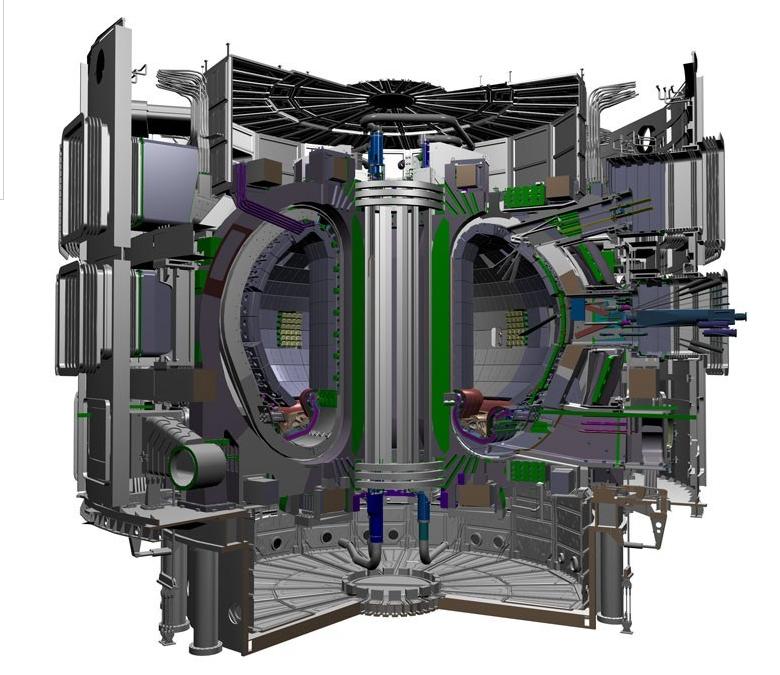Nuclear energy is the energy that holds the protons and neutrons together in the nucleus of an atom. This energy can be released through fusion or fission. All operating nuclear power plants get their energy from fission, but we actually use energy from fusion more (the sun uses fusion to generate radiant energy). Fusion is still in the laboratory phase, and there are no commercial fusion reactors. There is an old adage that "fusion is always a decade away," which is a pithy way of saying that despite decades of attempts, humans have not been able to figure out how to make it work well enough to deploy.
Fusion
In nuclear fusion, two light nuclei combine to form a single larger nucleus. It takes less energy to hold the larger atom together, and the excess nuclear energy is released as light and heat. (This is how the sun works--hydrogen atoms combine to form helium, releasing light and heat.) To get the atoms to fuse, however, requires a great deal of energy because there is an electrical repulsion that works to keep the similarly charged nuclei apart. The three requirements for a successful thermonuclear reactor are high particle density, high temperature, and a container that can maintain the temperature and density long enough for the fuel to be fused (Source: Oracle ThinkQuest).
Currently there are no deployed nuclear fusion reactors, but experiments continue around the world. A consortium including China, the European Union, India, Japan, Korea, Russia, and the United States is working on a project called ITER with the aim of providing each member with the know-how to produce its own fusion energy plant.
To Read Now
Visit the ITER website
- Under "Science," open and read the pages "What is Fusion?," "Advantages of Fusion," "60 Years of Progress," and "ITER Goals."

Fission
Fusion releases nuclear energy when lighter nuclei join (or fuse) to form heavier nuclei. Fission, on the other hand, releases nuclear energy by splitting atoms into smaller ones. The extra energy is released as heat and radiation.
In fission, a uranium-235 isotope absorbs a bombarding neutron, which causes the uranium nucleus to split into two atoms of lighter weight. This reaction releases heat and radiation, as well as more neutrons. These neutrons then bombard other uranium atoms, which then split and release more energy and neutrons, This happens over and over again in a chain reaction.
Note that both fission and fusion generate heat, but do not involve combustion. In other words, the atoms are split or fused, not burned. This is why neither of them emit carbon dioxide or other gases that are associated with the burning of fossil fuels or other carbon-based fuels like wood. (More on the byproducts of combustion in a future lesson.)
